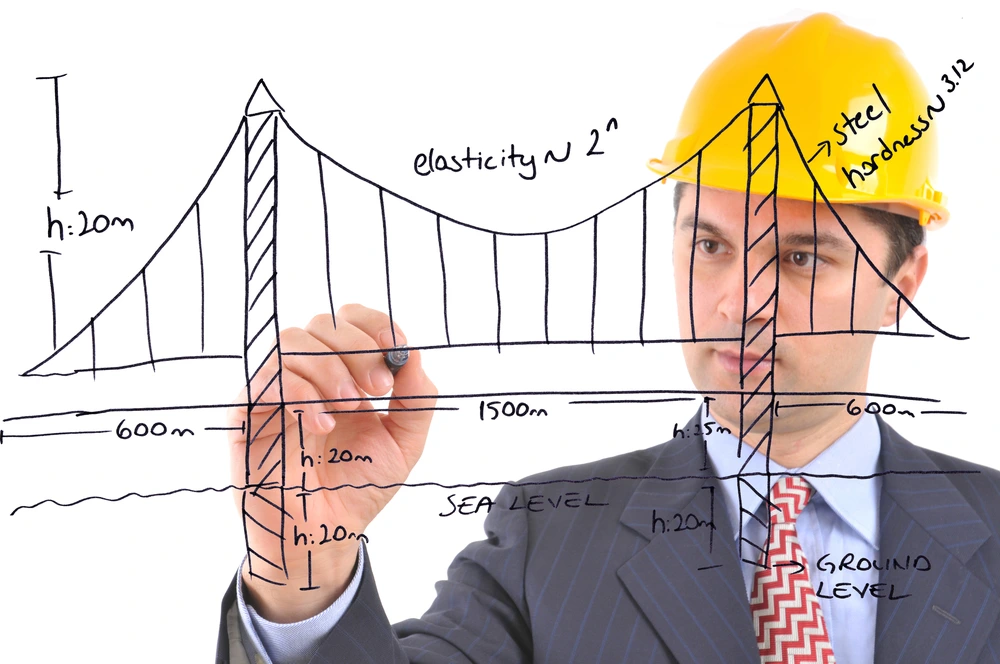Get Support
+91 9099658882
Importance and Role of Structural Engineering in Design
Structural engineering is a branch of civil engineering focused on the design, analysis, and construction of structures that can withstand the forces and loads they encounter. Structural engineers play a vital role in the construction industry, helping ensure that buildings, bridges, and other structures are safe, stable, and functional. But why is structural engineering design so essential, and how does it shape modern design? Let’s explore.

What is Structural Engineering?
Structural engineering is a specialty within civil engineering that focuses on designing structures capable of withstanding the forces and stresses they encounter. The primary objective is to ensure safety, functionality, and durability, whether the structure faces the force of gravity, weather conditions, seismic activity, or other external pressures.
Structural engineers analyze loads, assess material properties, and use engineering principles to create frameworks that support both the aesthetic and functional elements of a design. By addressing these challenges, they help bring architects' visions to life while ensuring public safety.
The Role of Structural Engineers in the Design Process
Structural engineers are involved in almost every phase of a project, from concept and design to construction and maintenance. Here’s a closer look at how structural engineers contribute throughout the design process:
Conceptual Design and Feasibility Studies: Structural engineers begin by collaborating with architects during the conceptual design phase, providing insights on the feasibility of design ideas. They assess if a proposed design can be structurally sound and evaluate different materials, construction techniques, and cost considerations.
Material Selection: Choosing the right materials is crucial for the safety, durability, and cost-effectiveness of a structure. Structural engineers consider material properties like strength, flexibility, and resistance to weather and chemical exposure, tailoring their recommendations to the unique needs of each project.
Structural Analysis and Load Calculations: Using advanced software and mathematical modeling, structural engineers analyze how a structure will behave under various loads, including its own weight, external forces like wind, and potential stresses from occupants or equipment. This analysis is essential to avoid overloading or structural failure, especially in high-stress structures like skyscrapers and bridges.
Safety and Compliance: Structural engineers are responsible for ensuring that all designs meet local building codes, safety regulations, and industry standards. This aspect of their work is essential, as building codes are created to protect public safety and ensure structures can handle natural forces like earthquakes, storms, and other environmental challenges.
Foundation Design: A strong foundation is crucial for any structure, and structural engineers design foundation systems that distribute loads evenly and prevent structural shifts or sinking. By analyzing soil conditions and load requirements, they develop foundation designs that provide long-term stability.
Sustainability in Design: With the growing emphasis on sustainability, structural engineers are playing a key role in designing eco-friendly structures. By incorporating energy-efficient materials, reducing waste, and exploring renewable energy options, they contribute to the development of green buildings that reduce environmental impact.
Importance of Structural Engineering in Modern Construction
Structural engineering is indispensable in creating safe, functional, and resilient structures. Here’s why it’s essential for every design project:
Ensuring Structural Integrity and Safety: The primary role of structural engineering is to ensure that structures are safe for their intended use. Through rigorous analysis and design, structural engineers identify potential weak points and reinforce them to prevent structural failures.
Protecting Against Natural Disasters: Structural engineers design buildings and infrastructure to resist the forces of nature, including earthquakes, wind, and floods. By adhering to seismic codes and incorporating resilient materials, they help create buildings that can withstand extreme events, minimizing risks to life and property.
Supporting Sustainable Development: Sustainable design practices are increasingly important, and structural engineers contribute by designing efficient buildings that use resources wisely and minimize environmental impact. They explore materials with lower carbon footprints, such as recycled steel and eco-friendly concrete, and design systems to optimize energy efficiency.
Enhancing Aesthetic and Functional Design: Structural engineers support architects in bringing creative design ideas to life. By developing safe frameworks that allow for innovative architectural forms, they make it possible to create eye-catching, functional spaces that meet both aesthetic and practical demands.
Economic Efficiency: Structural engineers optimize the use of materials and reduce unnecessary costs by designing structures that are efficient yet resilient. By preventing over-designing and utilizing cost-effective materials, they contribute to significant savings in project costs without compromising quality.
The Future of Structural Engineering
Looking ahead, structural engineering is set to grow in complexity and impact. Engineers will need to address rising environmental challenges and resource constraints. Trends like smart materials, artificial intelligence, and 3D printing promise to reshape the field. Structural engineers will play a crucial role in building resilient, sustainable cities for future generations.
Conclusion
In partnership with Karnavat Consultant, structural engineering plays a vital role in creating safe, sustainable, and efficient designs. It ensures that each structure can withstand various stresses while maintaining functionality and aesthetic appeal. Structural engineering not only provides the necessary stability but also optimizes materials and design to enhance project cost-effectiveness. This collaboration leads to designs that not only meet regulatory standards but also align with clients’ goals, paving the way for innovative and resilient infrastructure.
Looking for a Structure Consultants in India?
We can help you to find best Structural Consultant




